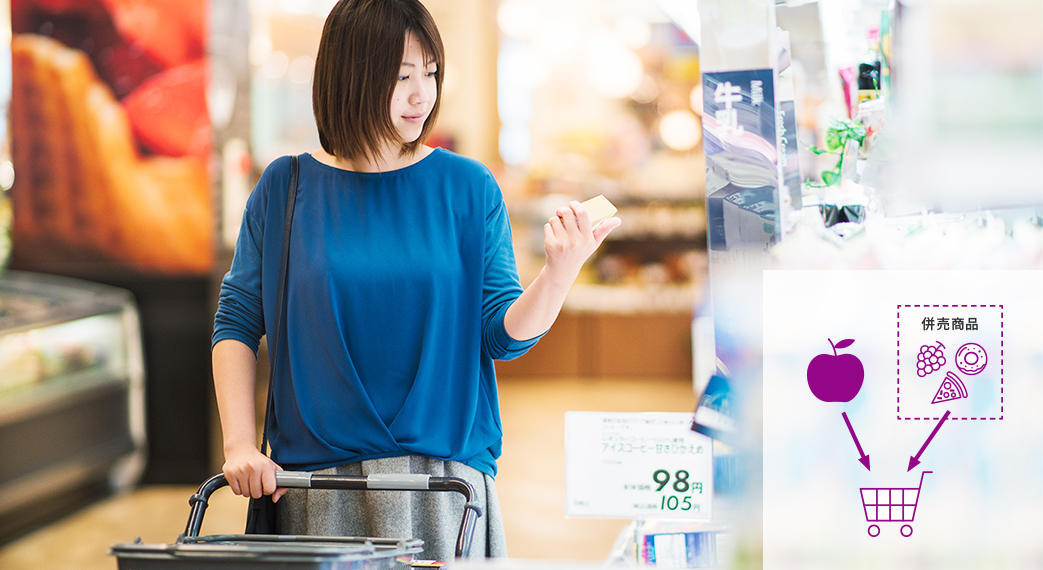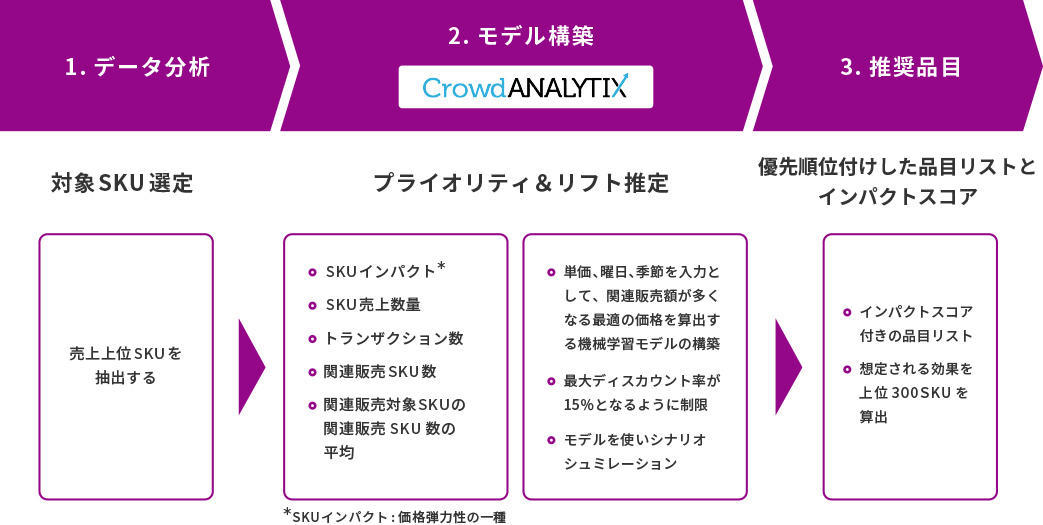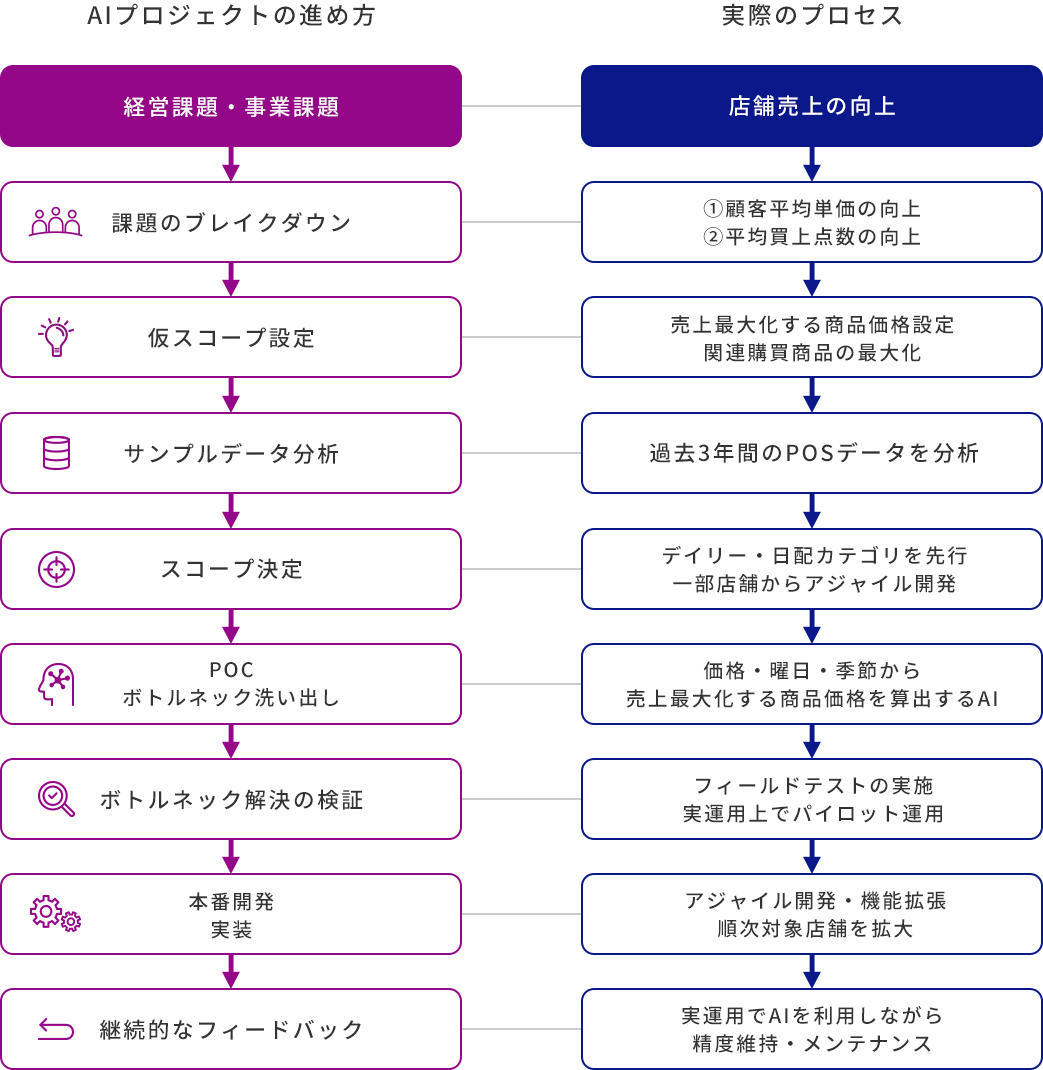Optimal price calculation of products
- Optimal price is calculated based on POS data and product purchase correlation
- Improve sales and gross profit through data-driven pricing that leads to increased sales
- retail
- Commodity price optimization
- Increased sales
- demand forecast
- POS data
- CrowdANALYTIX
Business challenge
In many cases in the retail industry, when setting product prices, product managers and category owners decide selling prices based on intuition derived from competitors and past experiences.
It is important to set a reasonable price that customers can purchase while increasing the unit price per customer for products with low gross profit per item.
Considering seasonal factors, we will increase the number of products in the basket as much as possible, continuously calculate the optimal price that makes it easy for customers to purchase, and what kind of efforts will be made to improve store sales and gross profit? should I do
Task
Supermarkets are indispensable for the residents of the surrounding area. It must be a store that provides daily food and other products at reasonable prices and becomes a part of people's daily lives. While we must provide products at the low prices demanded by consumers, improving store sales and gross profit margins is a constant challenge.
In general, the nationwide average customer spending at supermarkets is said to be around 1,950 yen on weekdays and around 2,220 yen on weekends and holidays. In addition, the nationwide average number of items purchased per person per purchase is said to be about 9.8 on weekdays and about 11 on weekends and holidays. If you raise the price of a product to increase sales, people will go to a competing store that offers the product at a lower price. In other words, there are only two ways to improve store sales and gross profit: (1) increase the average spend per customer, and (2) increase the average number of purchases.
The most direct factor that influences customer purchases is the product price. In most cases, current product prices are determined by each person in charge based on purchase prices and past sales prices, while taking into consideration factors such as the day of the week, season, weather, and sales prices at competing stores based on experience and intuition. However, on-site staff often have concerns such as, "Is the set price really optimal?" .
On the other hand, "when", "how much", "at what price", and "with which product" of each product in the past is accumulated daily as POS data. By analyzing and utilizing this POS data, is it possible to derive the optimal price for each product without relying on on-site experience and intuition, and improve store sales and gross profit?

Problem-solving process
The project started by thoroughly analyzing POS data, which is past sales records. We analyzed the POS data for each store for the past three years and identified the top-selling products from each product category.
In addition, detailed data analysis was carried out, including the rate of change in prices when products were discounted, changes in sales and sales volume at the time of discounts, and changes in the types and quantities of products purchased in relation to that time. As a matter of course, the effect of discounting products varies depending on the surrounding environment of the store.
In addition, by discounting one major product, it became clear that related purchase products that were purchased in connection with that product were selling well (eg curry roux, carrots, potatoes, etc.). Analyzing a huge amount of data to become the axis of sales for each store By setting optimal discount prices for mainstay products, it may be possible to induce related purchases and improve (1) the average customer unit price and (2) the average number of purchases. A hypothesis was derived.
From there, we started creating an AI model for each store by actually combining each data. The AI model simulates the sales amount of related purchased products induced by each product by using the unit price pattern, day of the week, and target season as input data for each product.
Then, as post-processing, a business rule such as a maximum discount rate suitable for actual operation is applied. Combining these multiple calculations, AI calculates the impact score for the sales of each product, and from there, the product price with the largest related purchase sales amount is set as the actual product price of the store.
In other words, AI can derive the optimal price for each product and maximize store sales.
After developing the AI model, the project moved to field testing in physical stores. Considering actual operation, we applied the price calculated by AI in the daily and daily categories, selected multiple stores based on the similarity of store size and surrounding environment, and conducted an AB test over several weeks. As a result, compared to other stores, stores where AI set prices showed a significant increase in overall sales of around 2%.
AI projects do not end with verification experiments. This AI project is scheduled to be rolled out to stores nationwide. Macnica will continue to support not only the formulation of deployment plans, but also the development, operation, and accuracy of AI models, as well as the further utilization of AI in the future as an ``accompanying partner.''


